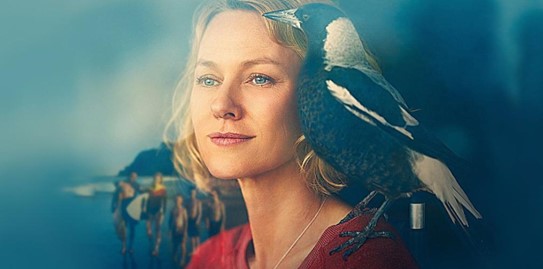Inspired by true events, Penguin Bloom tells the story of Sam Bloom, a mother and wife who became paralysed after a serious accident. As she struggles through a difficult recovery, a small miracle occurs, a magpie called Penguin enters the Bloom family, changing the course of their lives forever. This scruffy looking creature builds an unusual bond with Sam, a bond which consistently baffles the audience in its rarity, throughout the film. Although it is common for humans with disabilities to develop close relations with certain domesticated animals, [1] the magpie is certainly not one of them. As a result, we watch in utter disbelief as a human forms the deepest of connections with a wild bird, an animal usually associated with freedom and self-sufficiency.
In this moving scene, Sam and Penguin build a mutual relationship for the first time. Initially a squawking Penguin is hesitant, but the relationship quickly escalates into a wondrous moment of shared understanding between the two. Here, Penguin is presented as a principle of wonder, the only non-human being able to get through to Sam, a human engulfed by grief and anger. She helps Sam ‘reunite with something fundamental within her – a sort of unconsciousness “animal within”. [1] Using placement of the actors’ arms, and close-up as Sam wraps her hands around Penguin, Ivin highlights the importance of the interactive relationship between human and animal as a means of recovery. Sam’s comforting embrace allows Penguin to work out that she can trust this human being. Her squawks turn into noises of comfort, and she appears content to sit amongst Sam’s hands. In this way, Ivin uses this relationship to epitomise how human and animal rely upon each other to overcome pain.
Cutting to a close-up of Sam’s face, (Fig 2) we see recognition in her expressions that Penguin is more than just the wounded pet saved by her son. The transitioning of shots from Penguin’s point of view to Sam’s, emphasises how human and animal build emotional connections through the ‘shared gaze’, [2] allowing them to communicate. The camera jumps back and forth to mimic the way human beings converse in film. Ivin deconstructs this to show that despite being unable to communicate verbally, Sam and Penguin can converse through the act of looking and being looked at. The motherly stroking and mirrored looks suggest Sam and Penguin can identify with one another as equally broken beings dealing with new-found vulnerability. As a result, the two become humanised. Sam shows genuine emotion for the first time, just as Penguin shows signs of acknowledgement and understanding; typical human attributes. Sam’s eyes hold love and awe towards this quirky creature, while Penguin’s hold respect for Sam. Ivin’s sharp focus on the bird’s eye shows she recognises Sam as an individual like herself. He masterfully highlights the eye to humanise the intense emotion passing between the two (Fig 3). Sam’s head tilt and eyes portray that she is mesmerised by Penguin’s ability to recognise her. The filming reinforces common knowledge of magpies’ cognitive ability, as Penguin clearly remembers Sam’s face and can empathise with her. [3] It also reminds us of the role animals play within human wellbeing.
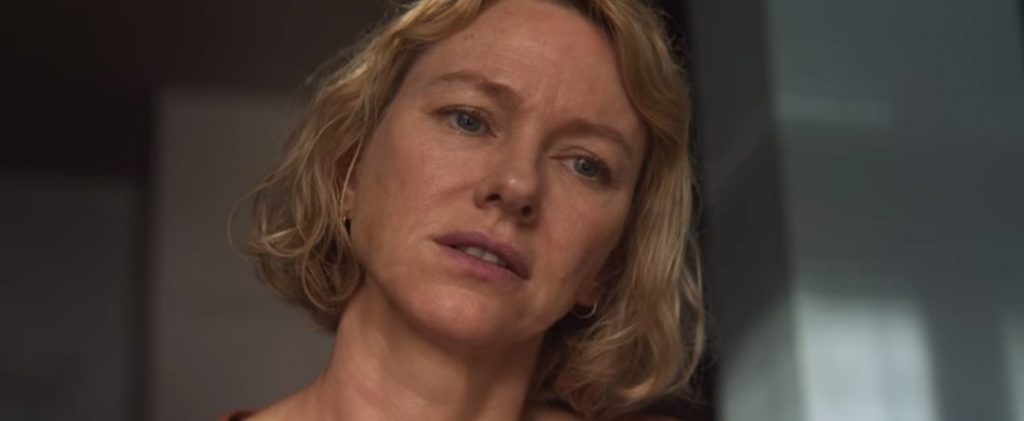
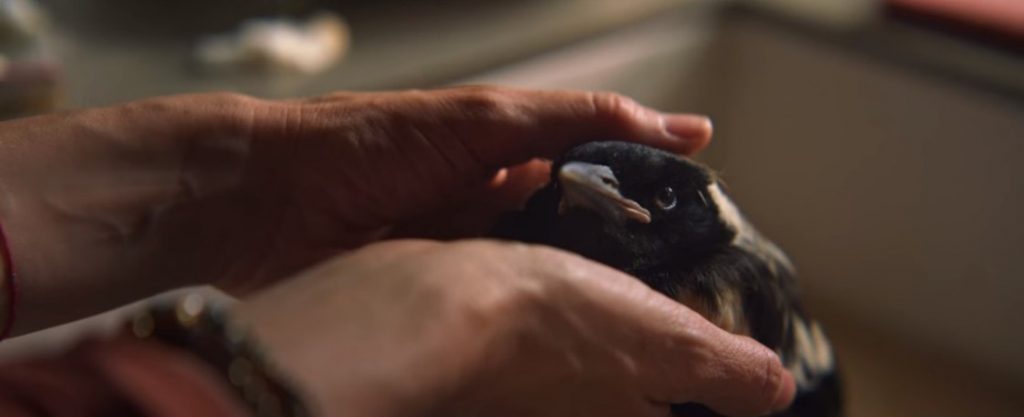
The powerful close-up of Penguin’s claws atop Sams hands (Fig 4) breaks down the human-animal binary and reinforces the ways in which they are intrinsically linked. By placing Sam’s hands and Penguin’s claws together, Ivin reveals how ‘animals are both like us and not like us.’ [1] This beautiful cinematography highlights the rarity of an extraordinary relationship between a paraplegic woman and an injured magpie. It is certainly significant that their bond grows through the trope of disability, the story shows how trauma links humans and animals, enabling them to develop a special relationship. It asks the audience to think about the role of animal assisted therapy, (Fig 5) an intervention which needs to be more highly recognised for its success.
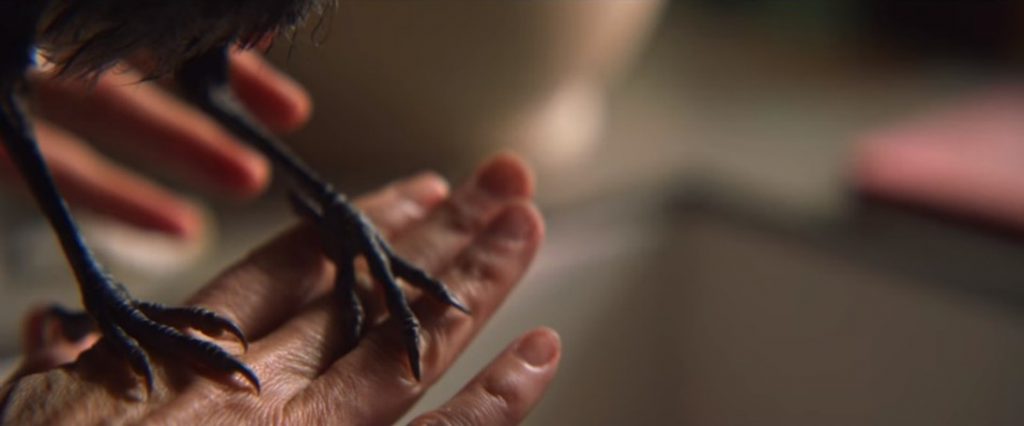
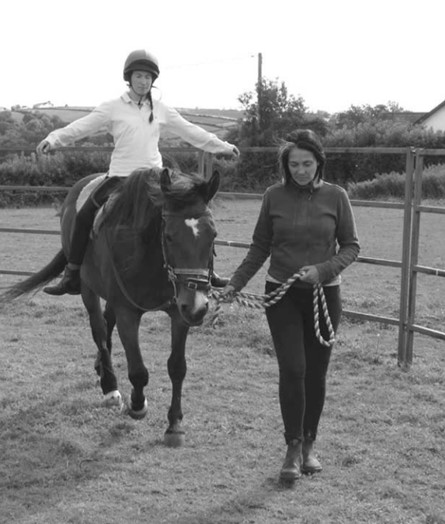
Using shallow depth of field and blurring the background, Ivin draws attention to the physical differences between bird and human while simultaneously showing how they are the same. Here, we see how humans are innately drawn to animal life, [1] whose presence can only be described as soothing and wholly reassuring. Both human and animal can recognise elements of themselves within one another, enabling them to heal from their traumatic experiences. It is almost as if Penguin and Sam are holding hands, an act usually associated with human beings. Ivin mimics this to highlight the importance of physical contact for the process of healing, but also to demonstrate how humans and animals develop friendships in the most unlikely ways. This shot encapsulates the authenticity of the real relationship between Penguin and the Bloom family as it speaks to Cameron Bloom’s photograph which uses shallow focus to capture the minute details of Penguin’s claw compared to Oli Bloom’s fingers (Fig 6).
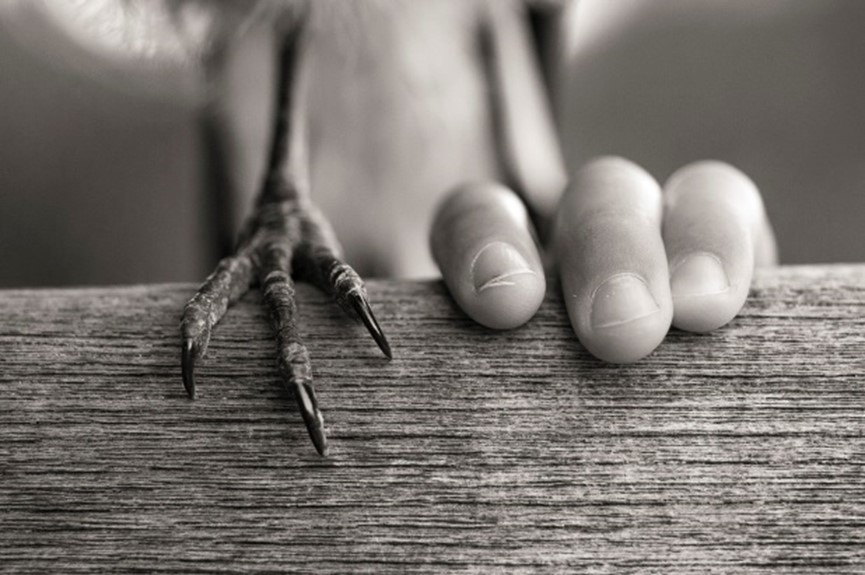
Sam and Penguin’s lives become emotionally intertwined in this momentous scene as they recognise their parallel roads to recovery. This mutual understanding undoubtedly saves both of their lives in this heart-warming story of healing.
References
[1] Hannah Louise Burgon, Equine-assisted therapy and learning with at-risk young people (Basingstoke: Palgrave Macmillan, 2014).
[2] Jonathan Burt, Animals in film, Locations (London: Reaktion, 2002).
[3] Peter Meredith, ‘Feathered geniuses: birds are much smarter than we think’, Australian Geographic, 2017 <https://www.australiangeographic.com.au/topics/wildlife/2017/11/bird-intelligence/> [17/01/22].
Bibliography
[4] Penguin Bloom, dir. By Glendyn Ivin (Netflix, 2021).
[5] Sam Bloom, ‘Penguin Bloom: The Odd Little Bird who saved a family’, Sam Bloom: Heartache and Birdsong, www.penguinbloom.com/home.
